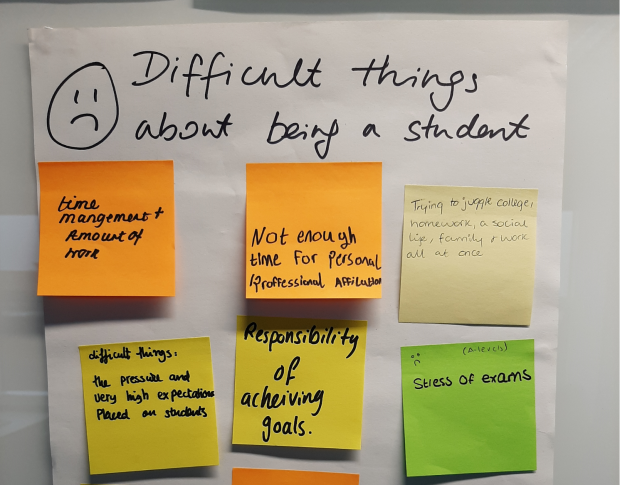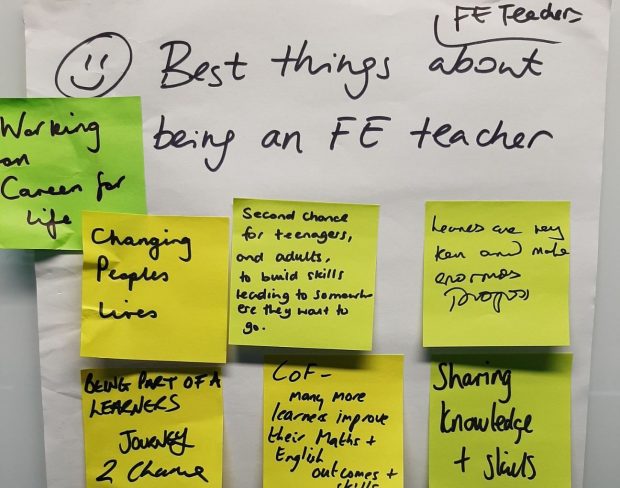
When it comes to mapping service lines as a user researcher, tackling a large area like further education can be daunting. The subject areas tend to be vast, and it's hard to know where to start. In this post I'll describe the user research approach we took to mapping the further education sector.
First we chunked it up. We took two contrasting geographic areas (we call these hubs) to group our research around, both outside of London and far away from Whitehall. One was in Greater Manchester, and the other on the south coast of England around Chichester and Worthing.
This was before the first COVID-19 lockdown, so we could still do user research in the traditional way - something we're looking forward to getting back to.
Choosing the areas
Greater Manchester was interesting partly because it is a mayoral combined authority so it’s funded differently to other parts of the country. For some of us in our user centred design lab it was home turf. I also had local knowledge and contacts, having previously done a lot of research for other private and public sector organisations nearby such as the BBC.
Worthing is a southern coastal area and a sharp contrast to Greater Manchester. The population is more spread out, and although there are similar types of further education providers, the local industry and the needs of the local labour market are very different. This was important because our research showed that further education providers felt that their strong link with the community and businesses were distinctive factors.
Meeting our users
When doing user research sometimes the temptation - legitimate in many cases - is to do a lot of desk research before speaking to people, but we had to move quite fast. It all needed to happen very quickly so it could feed into policy developments that were underway. Our findings would provide an overview of the system for policy teams working on the ‘Skills for Jobs’ white paper.
We organised a group of initial visits to further education providers and forewarned them that 'we might ask silly questions, but we're here to learn'. These providers were incredibly helpful, lining up interviews, walks around the campuses and observation sessions.
We spoke to 17 further education providers, 4 local authorities and 3 employers. Most of these were face to face visits, the rest phone interviews.
Immersive visits

Immersive visits quickly became the model for our approach. We visited, for example:
- an independent training provider at a logistics warehouse
- colleges setting up to deliver T-Levels
- a school sixth form centre
We observed college lessons and a training session for a hospitality apprentice
We attended campus tours and open days.
Overall, we spoke to 40 further education leaders, a further 34 staff and 77 learners during those visits.
These in-depth immersive experiences helped us to quickly understand things from the provider’s point of view.
We also spoke to learners and employers linking up with further education providers to get an understanding of their needs.
A receptive, vocal user group
Education leaders were willing to be interviewed, share their views, and explain the issues they faced. Similarly we were very keen to hear about their pain points particularly when interacting with government agencies when they do things such as:
- setting up classes, courses, training and other types of further education learning
- managing staff
- managing finance
- enrolling learners
- supporting learners
- engagement with employers
The importance of the local connection
Further education providers see their role as supporting and helping their communities - ensuring social and economic opportunity for all. Even those who have been out of education.
They also understand how important their role is in the local community. They offer social and economic opportunities for people who are within the education system and for those who’ve left and want to return.
College staff particularly felt this. From their point of view the government's interest was more about driving productivity and local economic growth. This sometimes caused tension for people working in the sector who questioned if they were helping the economy or community.
Understanding nuances like this while working alongside policy colleagues during user research, helps us to fully understand the problem and design better services.
Shaping policy
The project ended in late 2019. The challenges users spoke to us about became problem statements and design missions. These are recommendations for future policy and service development.
One of these recommendations was to produce clearer and simpler information for learners so they better understand their options and the implications of any choices they may make. We'll be doing remote interviews with learners later this month on this topic.
Another recommendation we made was to enable more collaboration between local further education providers and employers. In response to this we've brought a team in to explore links and join-up between learners who've just taken their GCSE's, and areas of local employment such as construction, hospitality, care, hair and beauty.
We presented our recommendations to senior leadership, and they've informed policy teams working on the ‘Skills for Jobs’ white paper, published in January 2021.
Our work was initiated by the Augar review. What we found in our research echoed many issues identified in the review but from a user-centred perspective.
We’re looking forward to getting out in the field again hopefully later this year, and hope the end of lockdown will provide lots of opportunities for this type of rich and intense user research.
Follow DfE Digital on Twitter.
Subscribe to our blog.
Recent Comments